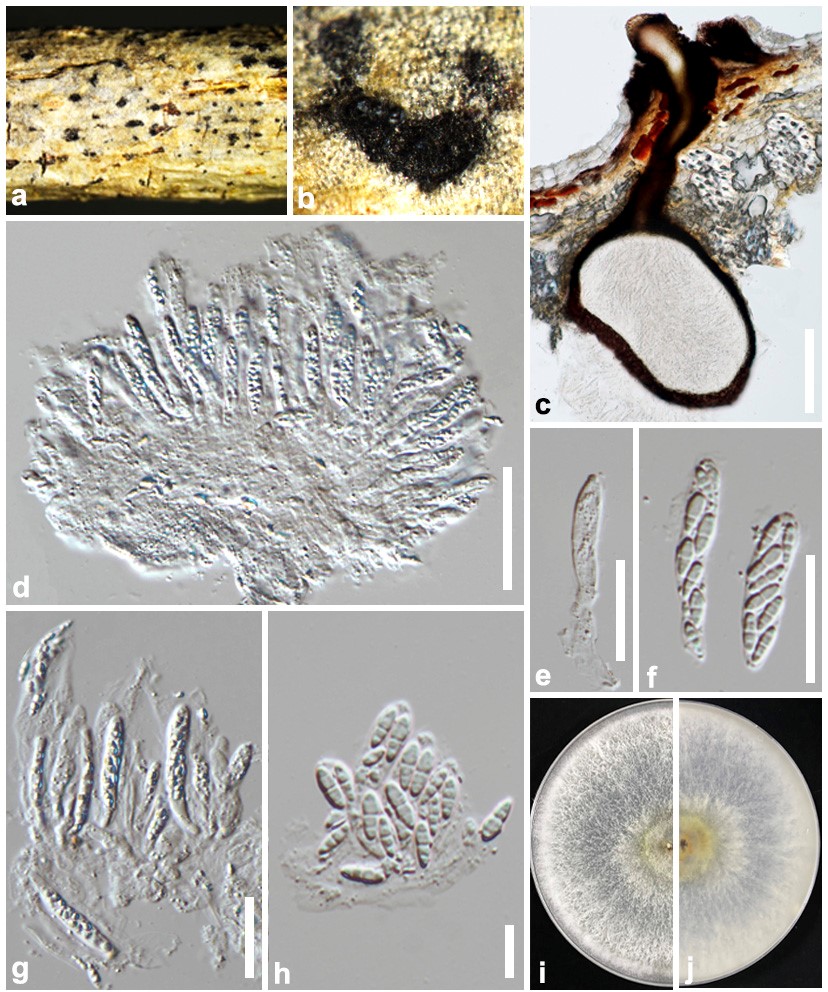Diaporthe submersa Y.Y. Chen, A.J. Dissanayake and Jian K. Liu sp. nov. (Figure f)
MycoBank number: MB; Index Fungorum number: IF; Facesoffungi number: FoF 12617
Etymology: Refers to the sub-merged ascomata in the host.
Holotype: GZAAS 22-0008
Saprobic on decaying wood. Sexual morph: Ascomata 225–350 μm diam., black, globose to subglobose, clustered and scattered on dead twigs, submerged in host tissue, protruding through substrata. Asci (55–)63–70(–75) × (9–)10–18(–19) μm, 8-spored, unitunicate, sessile, elongate to clavate. Ascospores (12–)12–14(–15) × (3–)3.5–4(–5) μm ( = 13 × 4, n = 30), hyaline, 2-celled, often tetra-guttulate, with larger guttules at centre and smaller at ends, elongated to clavate. Asexual morph: Not observed.
Culture characteristics: Colonies covering PDA Petri dishes after 10 d at 25 °C, with moderate aerial mycelium. Surface ochreous and reverse pale luteous
Material examined: China, Guizhou Province, Chishui city, saprobic on decaying woody host, May 2019, Y. Y. Chen (GZAAS 19-1848, holotype); ex-type living culture CGMCC = GZCC 19-0129; ibid, Guiyang District, saprobic on decaying woody host, March 2020, Y. Y. Chen (GZAAS 22-0008, paratype), living culture GZCC 22-0007.
Notes: The phylogenetic results showed that two isolates of Diaporthe submersa clustered closer to D. caryae forming a distinct lineage (Figure 2) with maximum support (ML/MP/BI = 100/100/1.0). Diaporthe submersa can be distinguished from D. caryae in the concatenated alignment by 3/512 in ITS, 8/413 in tef, 12/453 in tub, 11/506 in cal and 12/515 in his. Morphologically, D. submersa cannot be compared with D. caryae as it doesn’t compose an asexual morph (Yang et al. 2018).

Figure f. Diaporthe submersa (GZAAS 22-0008, holotype). a, b Ascomata on host surface. c Section of ascomata. d–g Asci. h Ascospores. i 10 days old culture on PDA from above. j 10 days old culture on PDA from reverse. Scale bars: c, d = 100 μm; e–g = 50 μm; h = 15 μm.
